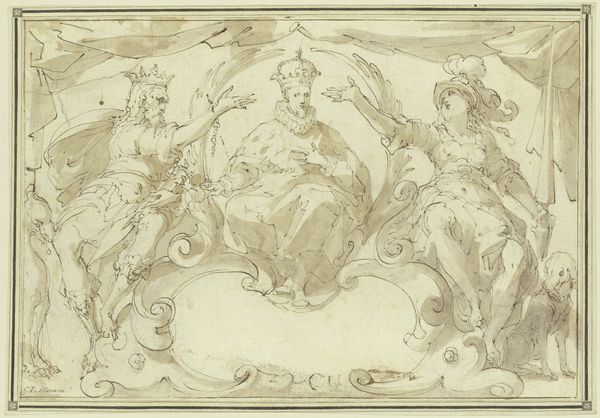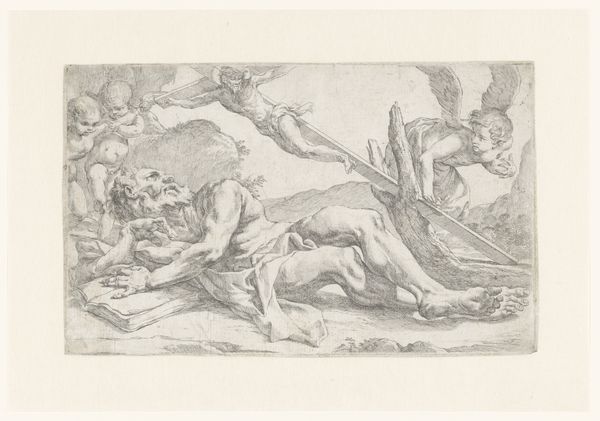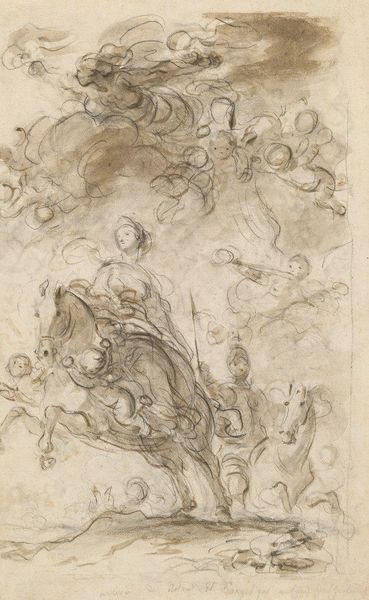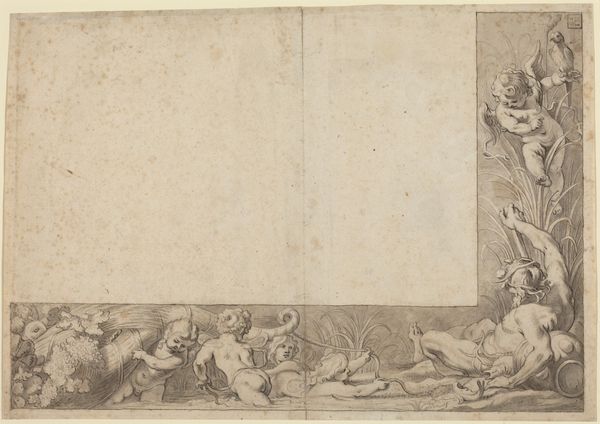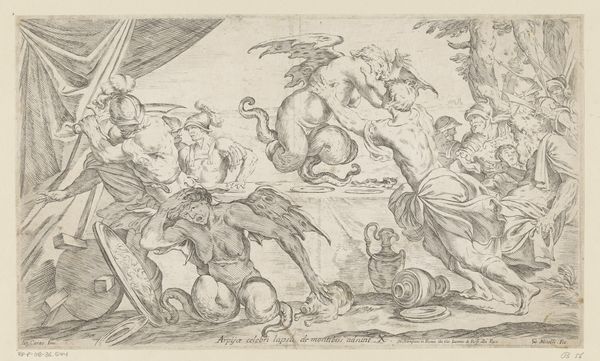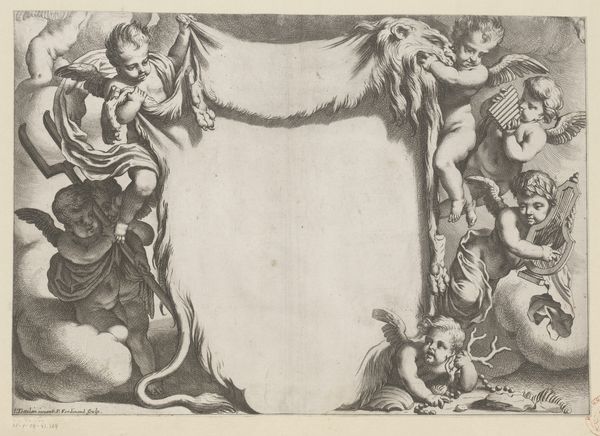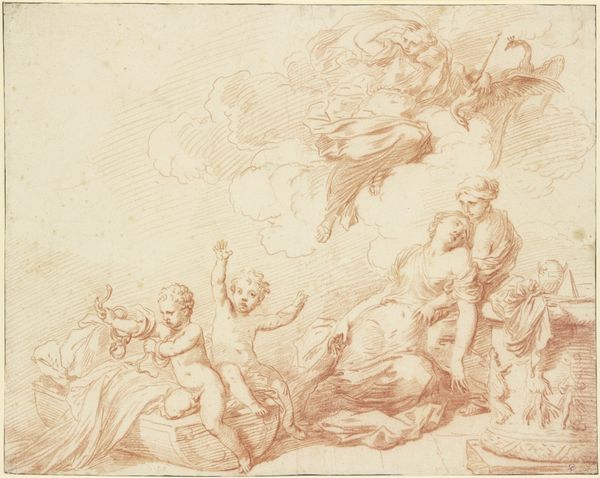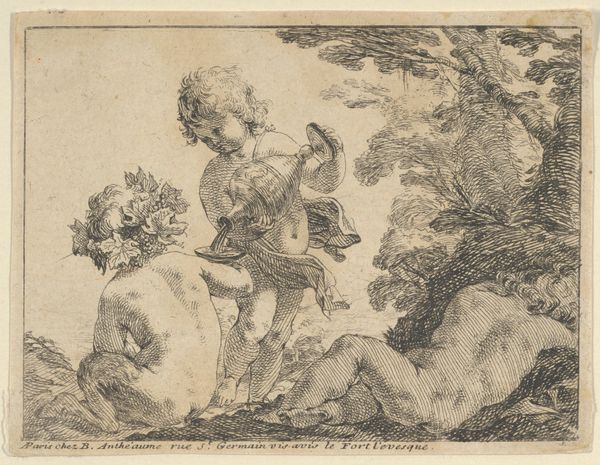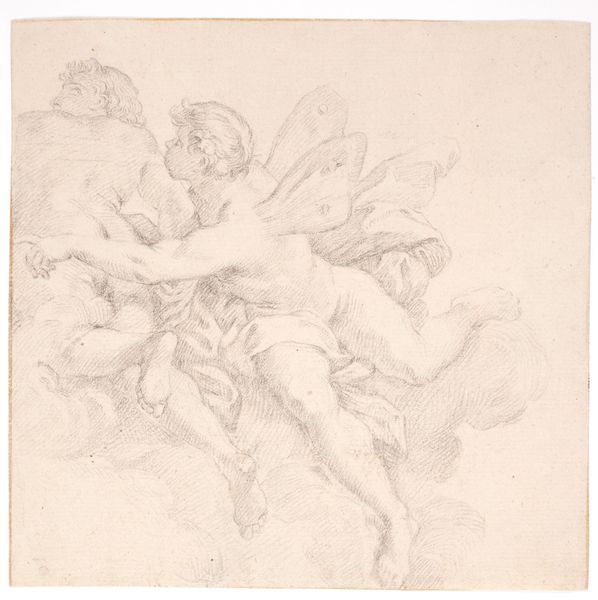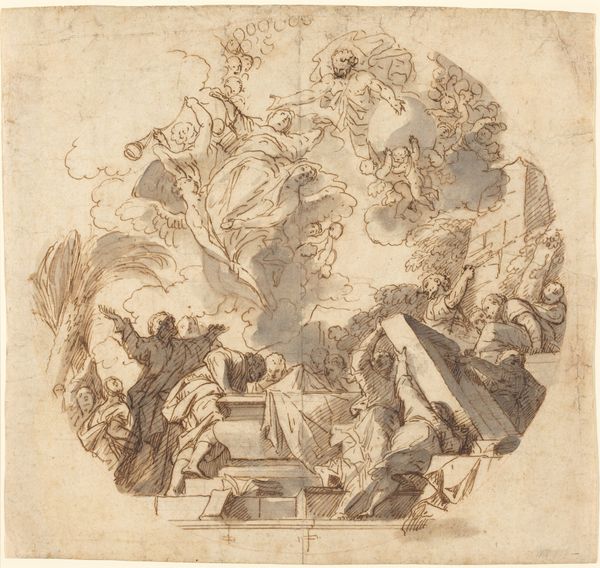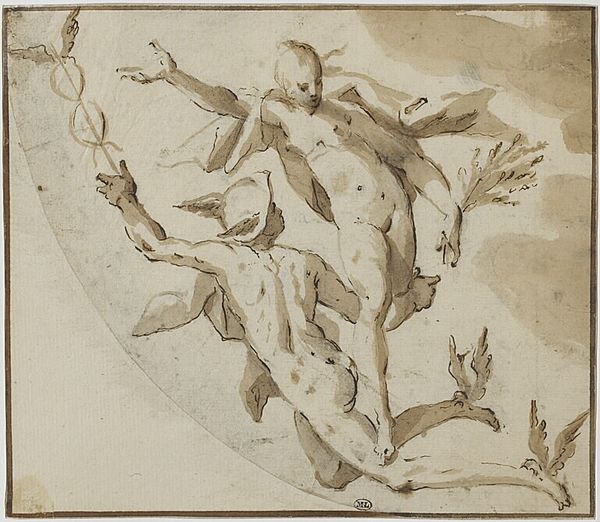
drawing, paper, ink, chalk, pen
#
drawing
#
allegory
#
pen sketch
#
pencil sketch
#
landscape
#
paper
#
ink
#
chalk
#
pen
#
genre-painting
#
history-painting
Dimensions: 141 × 219 mm
Copyright: Public Domain
Curator: The ethereal quality of this piece immediately strikes me. There's a dreamlike fragility in the angels’ expressions. Editor: We're looking at "Arch with Two Angels Holding Garland," a drawing of indeterminate date housed here at The Art Institute of Chicago, crafted anonymously with pen, ink, chalk on paper. Curator: The composition itself is masterful. Notice the way the artist uses line and wash to create a sense of depth and movement. The garland forms a central vanishing point, drawing the eye upward. The strategic placements of shadows define a tension that exists in holding the garland in the perfect point on top of the arch, is their labour, success, grace or divine burden. Editor: It's fascinating to consider how these drawings functioned within artistic patronage during this time. Were they preparatory sketches for a larger commission, perhaps a fresco, or presentation pieces to win favor from potential clients? Angelic imagery was employed both politically and religiously. Curator: Indeed. And speaking formally, observe the economy of the artist's line. Every stroke is imbued with intention, conveying both form and texture with remarkable efficiency. There are structural parallels between their robe, faces, and how each one is reaching to hold onto the flowers. I also enjoy the cherubic faces emerging below. Editor: Given that this drawing is unsigned and undated, reconstructing the precise context can only be speculative at best. Could it be possible that the choice of rendering two figures supporting a symbolic garland could function as an ideological justification for power dynamics and cultural projects? Curator: Perhaps! From my viewpoint, this particular drawing achieves transcendence through its exquisite balance between representational skill and expressive freedom. And it has three! Editor: Considering this, I am compelled to ask: In viewing artwork like this, how do we reconcile our appreciation of technical skill with a critical understanding of the historical power structures at play during its genesis and ongoing museum presentation? Curator: That tension between the aesthetic and the political is ever-present when studying historical works. Both contribute to how a modern audience comes to learn and experience history. Editor: Very true. Thank you.
Comments
No comments
Be the first to comment and join the conversation on the ultimate creative platform.

